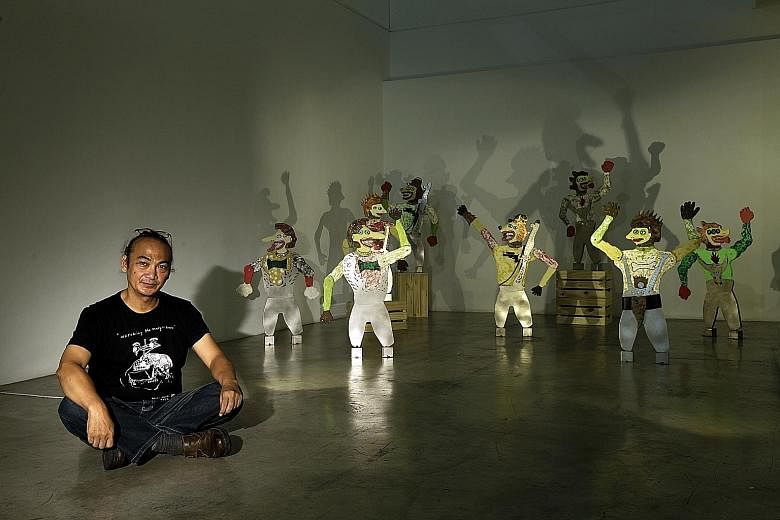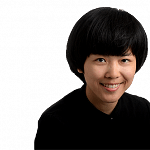To come up with the works in his latest exhibition, eminent Indonesian artist Heri Dono pushed himself to the point of "madness".
The 56-year-old artist says: "Creativity needs madness, it needs to defy the existing structure of logic and I wanted to challenge myself to create new forms of print."
He is better known for paintings and art installations that draw on forms of expression such as comics, animation and Javanese puppet theatre.
His ongoing solo show at Singapore's premier paper and print centre, STPI, is borne of his residency at its workshop last year. About 40 works, priced from $1,500, make up the show titled Zaman Edan (The Age Of Craziness).
Every one of the works in the exhibition, he asserts, is a print, even those that are not two- dimensional.
That moulded paper pulp of a cyborg with a rotating head? Do not call it a work of sculpture. It is a kinetic print, he says.
-
VIEW IT / ZAMAN EDAN (THE AGE OF CRAZINESS)
-
WHERE: STPI, 41 Robertson Quay
WHEN: Till June 25, 10am to 7pm (weekday), 9am to 6pm (Saturday), closed on Sunday
ADMISSION: Free
Similarly, the cluster of suspended paper horses is not an installation but a collection of pendulous prints, and the group of standing paper figures lit by a rotating lamp is not a set of mixed-media works that casts moving shadows, but three- dimensional prints that create ephemeral silhouette prints on their surroundings.
He does not mean to be facetious by turning the identity of print on its head, even though he does use sly wit and satire in his work to critique socio-political issues.
Instead, the aim is to present a "serious exploration of what print is".
"I did not want to make different expressions of print. I wanted to make something new," he says.
And to do that, he had to "upset my mind".
The moment of creative madness came when he viewed prints as being defined not by their medium and result - as paper that has been inked - but by their process of making, which involves the use of templates and allows copies of a design to be produced.
"This is the first time I have templates of my works, even for the pieces you would call sculpture," he says, explaining how the novel experience of working in print led to his aberrant, boundary-pushing view of the art form.
His practice has been expanded through this exploration as he worked with photography for the first time.
A body of inkjet and screen-print on canvas works in the show features mundane things in the STPI workshop, including machinery, which he photographed then layered with designs of fantastical beasts and cyborgs to depict "the soul inside the machine".
These distinctive images of bizarre creatures have long been a part of his visual language and they are what unite his prints. They give form to his idea of a post-human world where machines, advanced technology and genetic mutation rule the day.
This sense of madness is referenced in the title of the exhibition, a phrase that comes from a piece of literature by the 19th-century Javanese poet and mystic Ronggowarsito, which describes life in cataclysmic times.
Dono's view is that every period of history cycles through such turbulence and the creative journey of an artist should similarly be a mirror of such periodic trans- formations.
He says: "When creating new works, I need to change myself and not worry about losing my super- ego. And this was the challenge of STPI - to create what is thought to be impossible."


